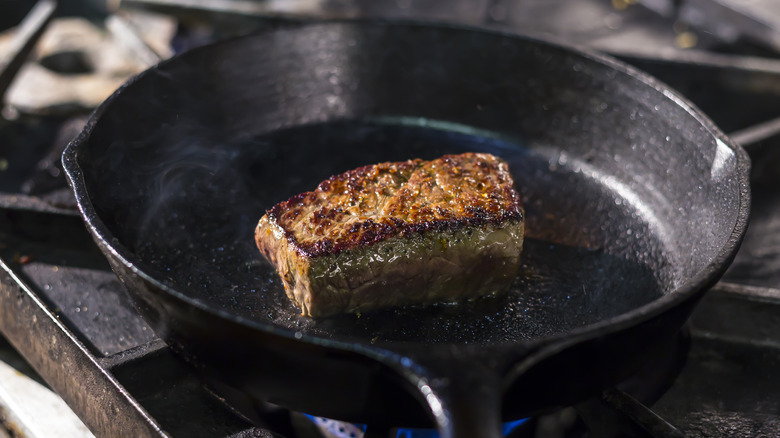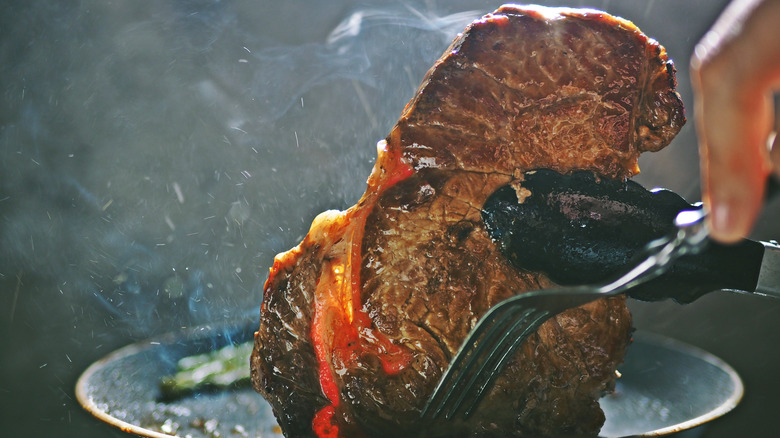What's The Difference Between Searing And Browning Meat?
You may have read a recipe instructing you to "sear" or "brown" your meat before stewing, simmering, or putting it in the oven. Maybe you assumed those instructions were referring to the same process, but searing and browning are actually two distinct terms with two different culinary purposes.
Searing, typically used in the context of meat, is the act of putting an ingredient on a very high-temperature surface to form a crust on the exterior, typically 450 to 500 degrees Fahrenheit. This is not always just done to cook the meat through, but to develop and lock in flavor.
Browning, on the other hand, refers to a reaction. When ingredients take on a brown color due to the Maillard reaction (which happens when heat transforms protein and sugar, resulting in a change in color, scent, and flavor), this is known as browning. Browning occurs as a result of searing, but not all browned ingredients are seared, as it's possible to brown ingredients on a lower heat than searing requires.
Why sear meat in the first place?
Searing meat is an essential process, but why exactly is that the case? Some people assume that searing meat seals in the interior juices, making the final product more succulent. While this idea still prevails in many kitchens, the truth is that searing meat actually evaporates moisture, costing it more juices than it saves.
The real reason we sear meat is to ensure a rich and delicious flavor. Maillard reactions result in compounds that tantalize our tongues; that roasty, toasty, robust flavor you taste on a perfectly grilled steak is a result of that process. It also develops a beautiful color on the meat; we eat with our eyes first, and most people would agree that a rich dark brown crust is ideal. This is why recipes instruct to sear meat before braising or other "wet" cooking techniques — on top of improved flavor, it helps the final product look more appetizing.
How to sear like a pro
Take your cooking skill up a notch by learning the proper way to sear meats. Start early: You'll want your meat to come to room temperature before searing it, so remove it from the fridge about 30 minutes before you're ready to cook. Salt the meat but do not put pepper on it — pepper can scorch at high temperatures.
You want a very hot pan for searing, preferably cast-iron to ensure even heat distribution. Oil is the ideal grease for searing, specifically something with a higher smoke point — such as canola, safflower, or clarified butter. Put a little oil in the pan and allow it to come to temperature, then put the meat in the pan and don't touch it for two to three minutes, until a golden crust has formed. Use tongs to turn the meat on each of its sides until the entire surface area has been seared.
You may have also heard of a "reverse sear" for steak, which is a technique used more frequently in thick cuts of meat that may not cook fully on the stovetop. To do this, cook your meat in the oven until done; let rest, then sear each side in a skillet in the same fashion as above, but for only one minute (or less) on each side.


